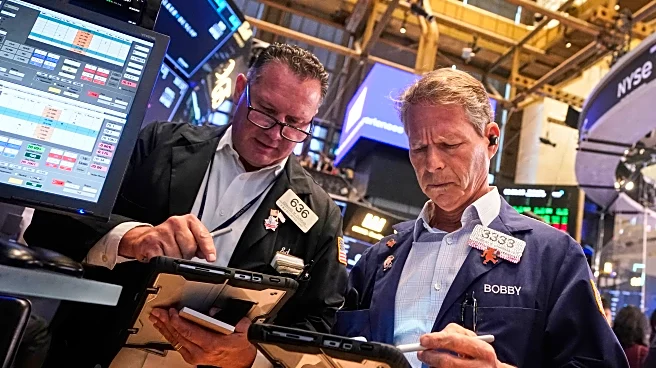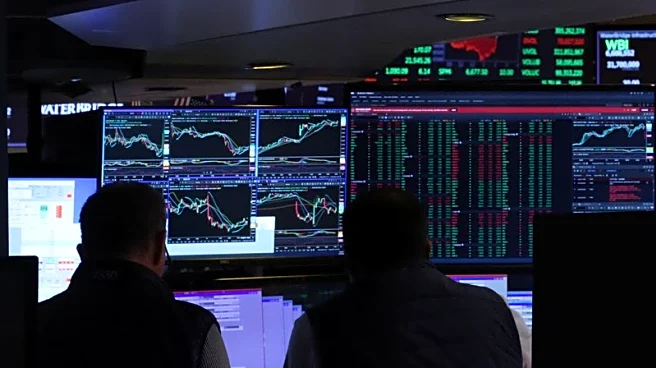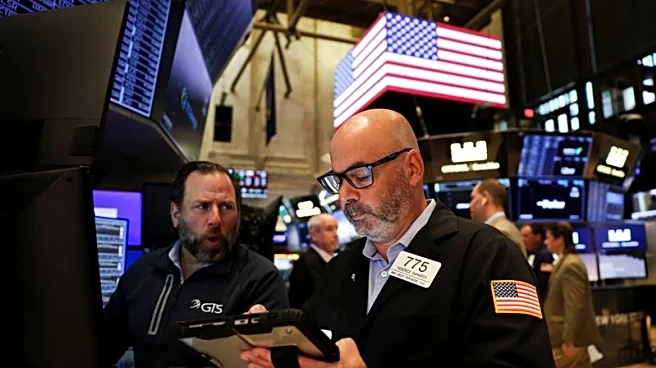Rally's Abrupt End
The stock market's triumphant run came to a sudden stop on Wednesday, marking the second consecutive day of losses. This decline brought an end to the impressive record-breaking gains that had characterized recent trading sessions. Market observers noted the shift, as the exuberance of the previous rally waned, signaling a change in investor sentiment. After experiencing a period of consistent growth, the market now faces a period of uncertainty as investors reassess their strategies in response
to the altered financial landscape.
Factors in the Shift
Several elements contributed to the shift in market behavior, which led to the end of the record-breaking rally. A key factor was the reaction to cautious remarks made by economic analysts. These statements prompted investors to reassess their positions, leading to a decrease in buying activity and an increase in selling pressure. The previous rally had been driven by factors, including a rate cut by the Federal Reserve, which boosted investor confidence. The excitement surrounding developments in Artificial Intelligence (AI) also played a role in fueling market optimism, and investors showed interest in the companies driving these advances.
Rate Cut Impact
The earlier rally was significantly fueled by the anticipation and subsequent implementation of a rate cut. A reduction in interest rates typically lowers the cost of borrowing for companies and consumers, which can spur economic activity. Lower borrowing costs encourage businesses to invest, expand, and create jobs, while also increasing consumer spending. However, subsequent remarks indicated that the effects of the rate cut might not be as immediate or as strong as initially expected. This shift in perception caused some investors to reconsider their earlier bullish bets and adopt a more cautious approach. The market's sensitivity to such announcements highlighted the critical role played by monetary policy in shaping investor confidence and directing market trends.
AI's Influence
The surge in interest and investment surrounding Artificial Intelligence (AI) significantly contributed to the recent market rally. The rapid advancements and increasing applications of AI across various sectors led to high expectations for the future of companies involved in this technology. Investors saw tremendous potential for growth and innovation, causing them to pour capital into these stocks. The impact of AI on the market was particularly visible in the technology-heavy Nasdaq, where many AI-related companies are listed. However, as with any technology-driven boom, the market's enthusiasm for AI also created a degree of speculation, which made it vulnerable to changes in sentiment or economic developments.
Investor Reactions
Investors responded to the change in market conditions by adjusting their trading strategies. Some began to take profits on previous gains, reducing their exposure to risk. Others adopted a more cautious stance, delaying investment decisions until there was more clarity about future market movements. The shift toward a more conservative approach reflects a broader recognition of the potential risks and uncertainties in the current economic environment. As the rally lost steam, many investors reassessed the sustainability of the recent gains and considered the possibility of a market correction. This led to an increase in selling activity, which contributed to the downward pressure on stock prices and signaled a decrease in investor confidence.
Future Market Outlook
Looking ahead, the direction of the stock market is uncertain. The market’s future performance will be greatly influenced by several factors, including further statements from economic analysts. The Federal Reserve's actions concerning interest rates will also have a major impact, with any changes significantly affecting the market. Moreover, developments in the AI sector will continue to be a key driver of investor sentiment. Monitoring these factors is crucial for investors to navigate the potential volatility and make informed decisions. Understanding these elements provides a critical framework for assessing the potential risks and opportunities in the market.
Market Volatility
The market's recent volatility underscores its sensitivity to various economic and financial factors. This heightened sensitivity is likely to persist, creating both opportunities and risks for investors. Changes in market sentiment can have substantial consequences, and investors should remain vigilant. Given the rapid pace of change in the economy, regular assessments and adjustments of investment portfolios are essential to managing risk. The market’s volatility emphasizes the need for a long-term perspective and the value of diversification. Investors are encouraged to stay informed, exercise prudence, and make choices that align with their financial goals.
















